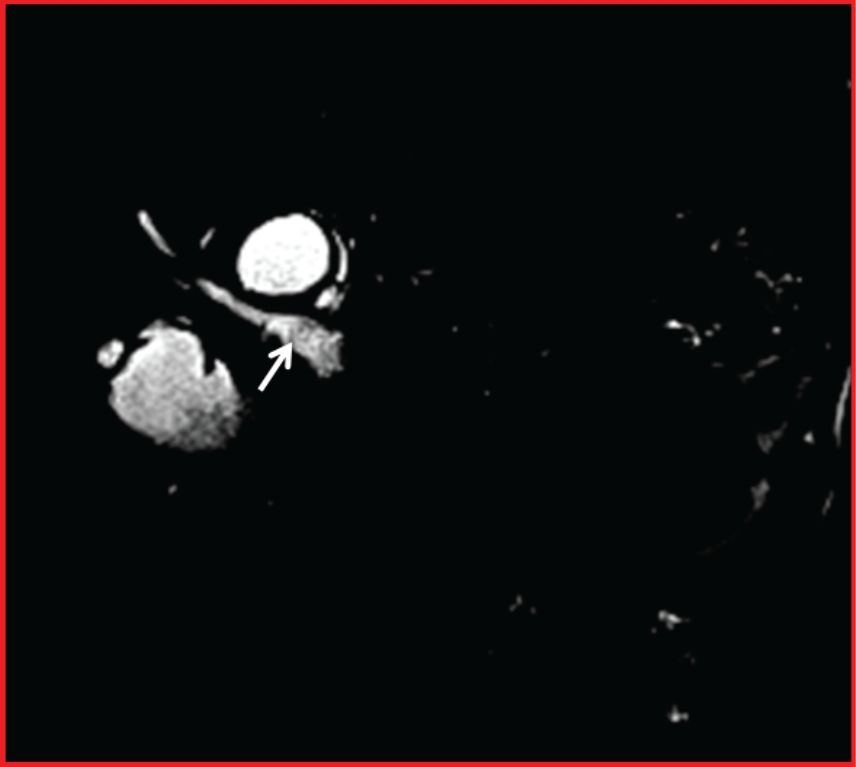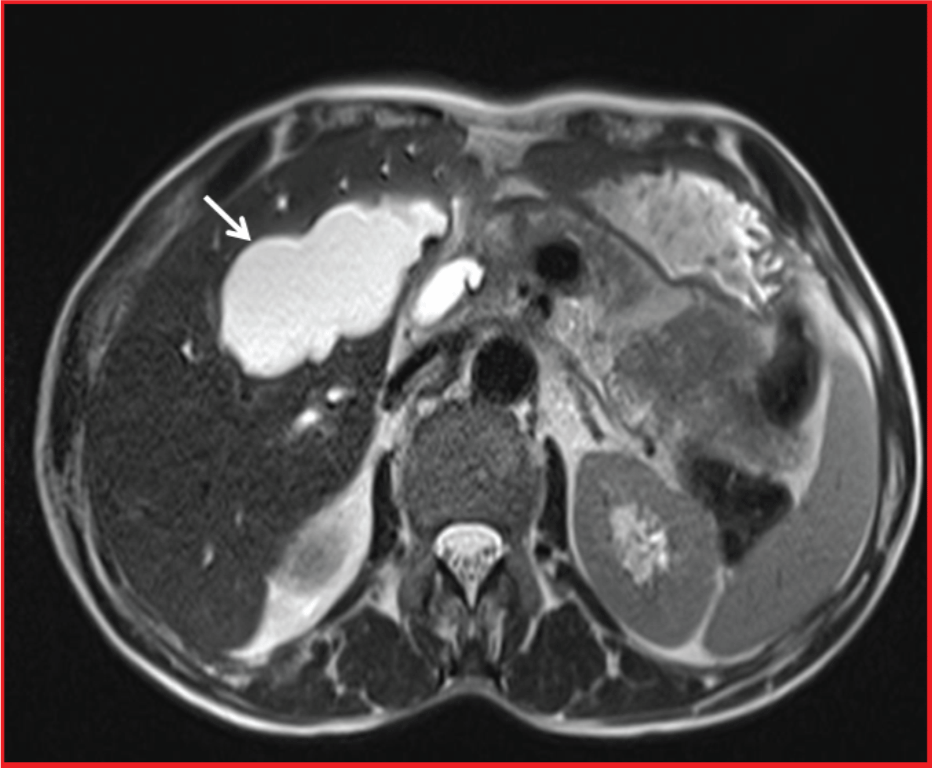Hydatid cyst, Biliary, Ruptured, MRCP
A 69-year-old man was admitted to our department with a 2-day history of jaundice, nausea, and vomiting. MRCP showed that dilatation of the intra and extrahepatic bile ducts and fragmented membranes in the common biliary duct (Figure 1). Additionally, a hydatid cyst which is lost of volume tension was detected in segment 6 of liver (Figure 2). Impaction of hydatid material into the common bile duct was relieved endoscopically.
Cystic echinococcus is caused by the larval form of tape worm Echinococcus granulosus. Among the complications of hydatid liver disease, spontaneous cyst rupture into the biliary tract is unusual. Hydatid cyst rupture has been classified into three types: Contained (when only the endocyst ruptures and the cyst contents are confined within the pencyst); communicating (when the cyst contents escape via biliary radicles that have been incorporated in the pencyst); and direct (when both the endocyst and the pericyst tear, allowing cyst contents to spill into the pleural or pentoneal spaces) [1,2]. Most hydatid cysts of the liver eventually leak into small bile ducts or perforate into larger ones. Less frequently, a large bile duct is involved, allowing daughter vesicles and/or fragmented membranes to escape into the biliary tree. In this situation, obstructive jaundice or cholangitis is much more common than when the communication is small [3].
None.
None.

Figure 1: Magnetic Resonance Cholangiopancreatography (MRCP) shows dilatation of the extrahepatic bile ducts and fragmented membranes in the common biliary duct (white arrow).

Figure 2: Axial T2 weighted image shows a hydatid cyst lesion with decreased volume and lobulated contour in the segment 6 of the liver (white arrow).